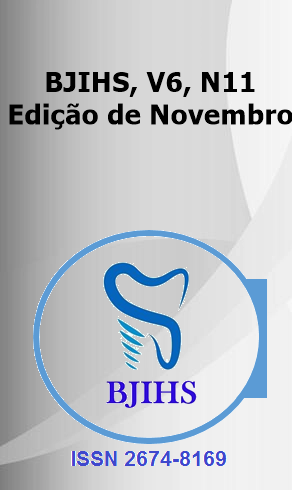Abstract
The article examines strategies for managing difficult airways, a critical condition that can compromise oxygenation and endanger the patient’s life. The integrative review covers assessment tools, technological advancements, and educational aspects that directly influence clinical outcomes. Among the technological advances, videolaryngoscopes are highlighted for improving visualization and increasing intubation success rates, especially in challenging anatomies, alongside second-generation supraglottic devices that provide effective ventilation alternatives in cases of intubation failure. Bronchoscope-guided intubation is recognized as the gold standard in specific scenarios, though it requires advanced technical skills.
The systematic application of algorithms is emphasized as a practice that reduces intervention time and improves outcomes, supported by simulation training, which prepares teams for real-life high-pressure situations. Invasive techniques, such as cricothyroidotomy, are considered last-resort options, with challenges in ensuring their safe execution. In addition to technical skills, the article underscores the importance of effective communication and teamwork in successfully managing complex cases.
It concludes that, despite advancements, clinical variability and the unpredictability of difficult airways demand continuous training, the integration of new technologies, and the application of systematized practices to mitigate risks and improve outcomes.
References
AHMED, A.; AZIM, A. Difficult tracheal intubation in critically ill. Journal of Intensive Care, v. 6, n. 1, 13 ago. 2018.
AVERY, P. et al. Rapid sequence induction: where did the consensus go? Scandinavian Journal of Trauma, Resuscitation and Emergency Medicine, v. 29, n. 1, 13 maio 2021.
BIRENBAUM, A. et al. Effect of Cricoid Pressure Compared With a Sham Procedure in the Rapid Sequence Induction of Anesthesia. JAMA Surgery, v. 154, n. 1, p. 9, 1 jan. 2019.
CZARNETZKI, C. et al. Rapid Sequence Induction With a Standard Intubation Dose of Rocuronium After Magnesium Pretreatment Compared With Succinylcholine: A Randomized Clinical Trial. Anesthesia & Analgesia, v. 133, n. 6, p. 1540–1549, 17 dez. 2020.
DRIVER, B. E. et al. Drug Order in Rapid Sequence Intubation. Academic Emergency Medicine, v. 26, n. 9, p. 1014–1021, 19 mar. 2019.
HIGGS, A. et al. Guidelines for the management of tracheal intubation in critically ill adults. British Journal of Anaesthesia, v. 120, n. 2, p. 323–352, fev. 2018.
KNAPP, J.; VENETZ, P.; PIETSCH, U. “In cabin rapid sequence induction“. Der Anaesthesist, 8 mar. 2021.
KRAMER, N. et al. Rapid Sequence Intubation in Traumatic Brain-injured Adults.Cureus, 25 abr. 2018.

This work is licensed under a Creative Commons Attribution 4.0 International License.
Copyright (c) 2024 Fabíola da Silva Magalhães, Thiago Dutra Mendonça , Paola Furlanetto Pilatti, Vitor Gonçalves Leal, Guilherme Daltro de Castro Rego Barros, Carine Fontes Guerra, Andressa Fatima Konzler, Mauricio Junior Meister, Brenda Felski dos santos, Maria Amelia Araujo Betoni, Míriam Gonçalves de Castro
